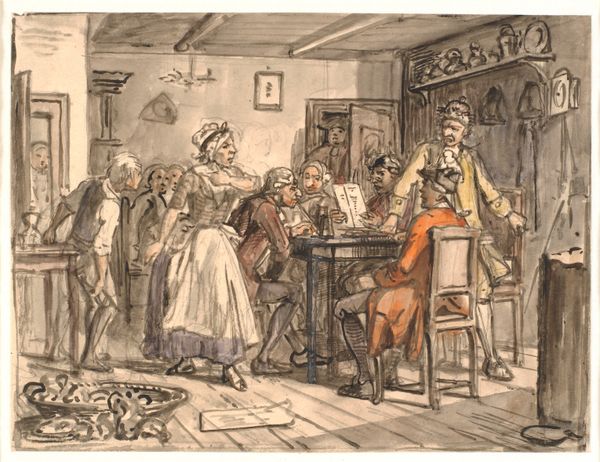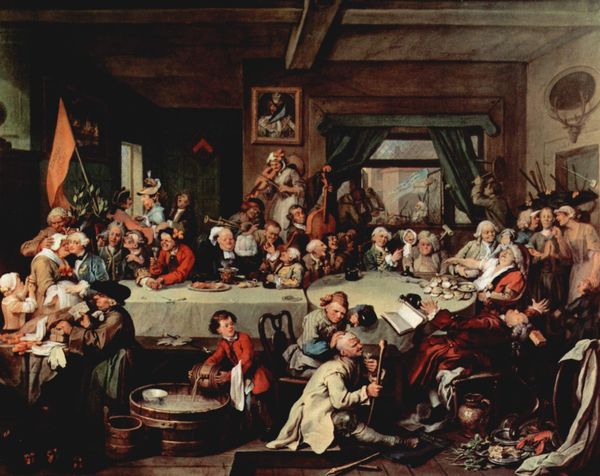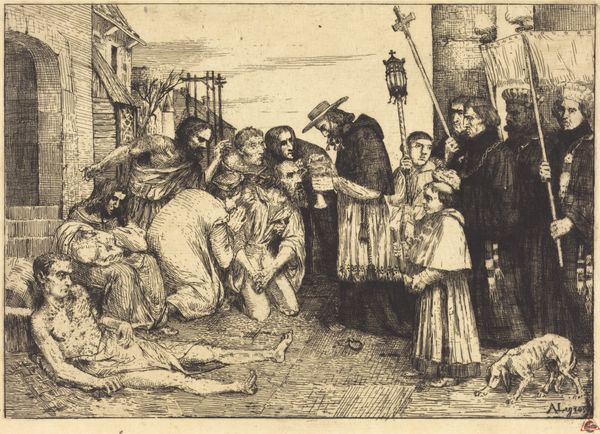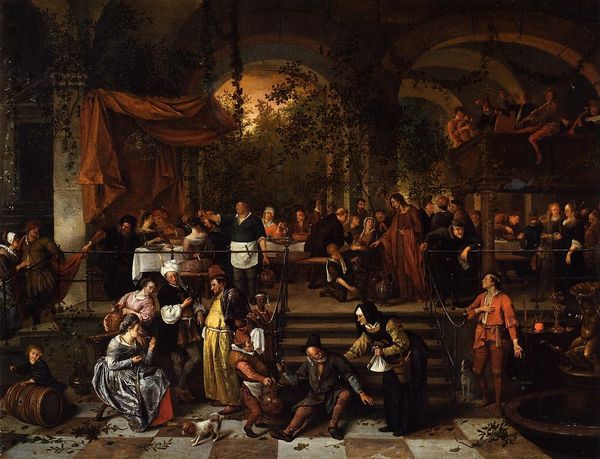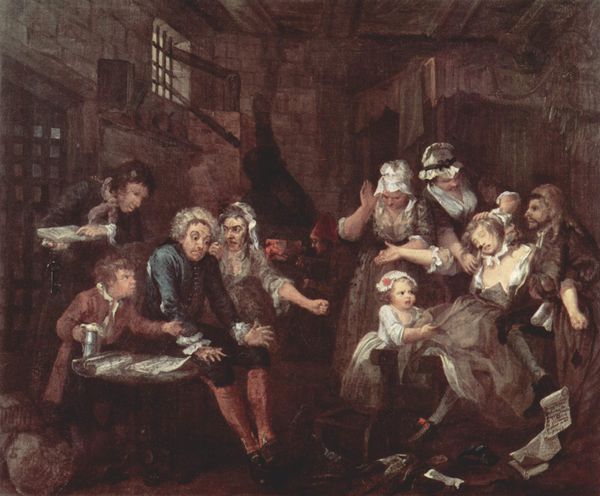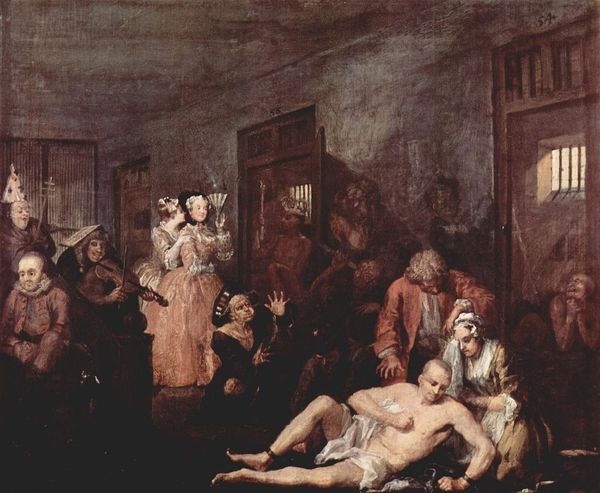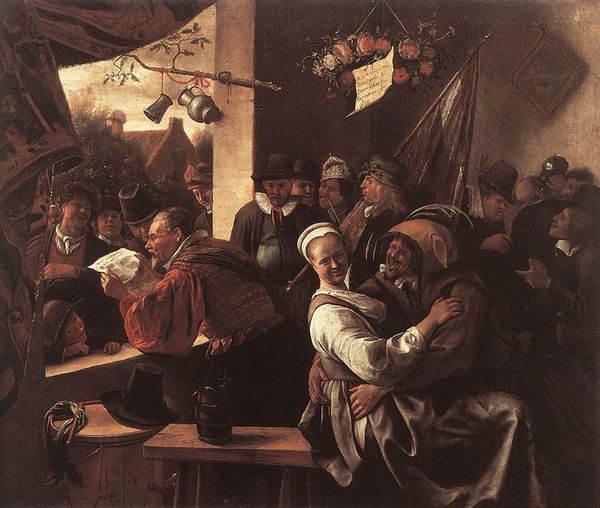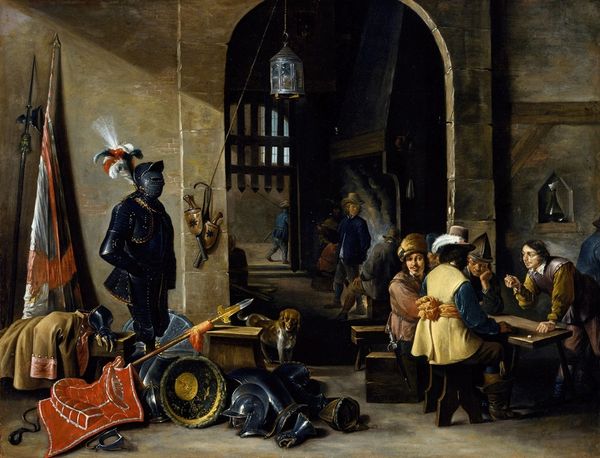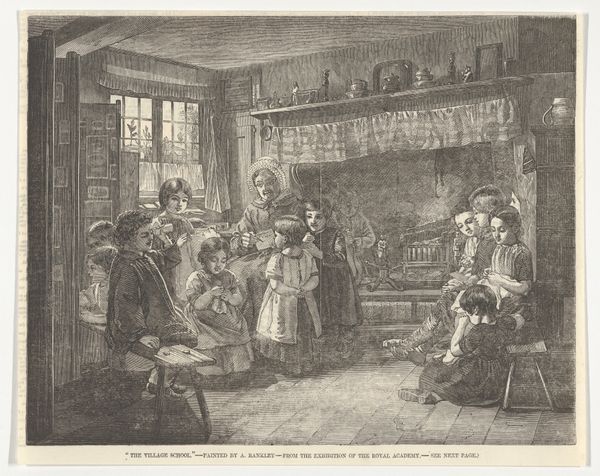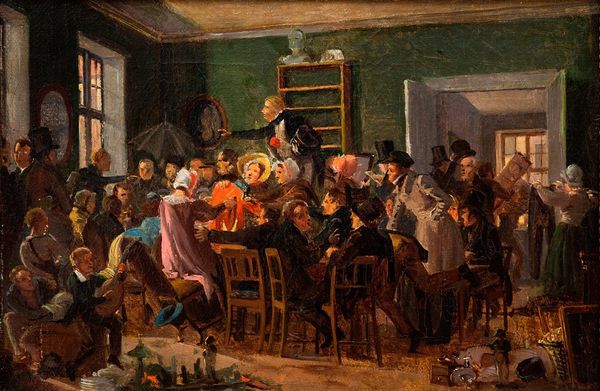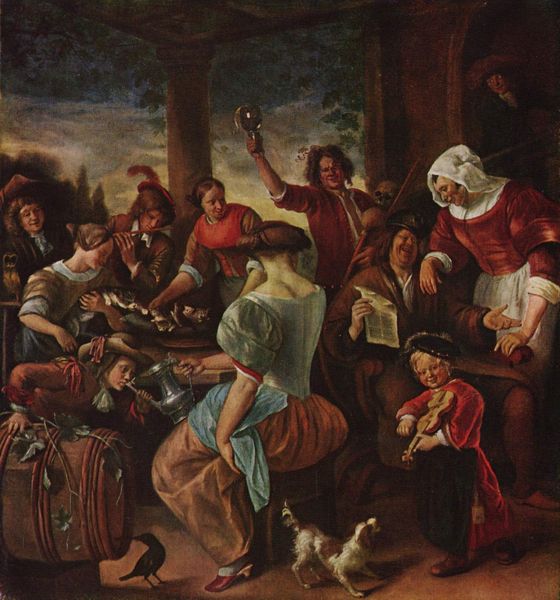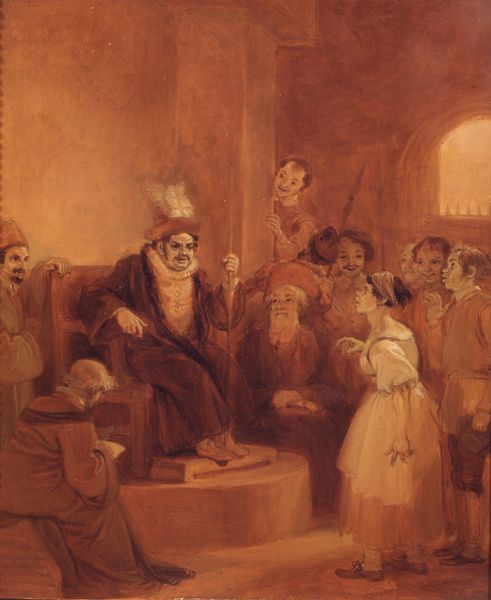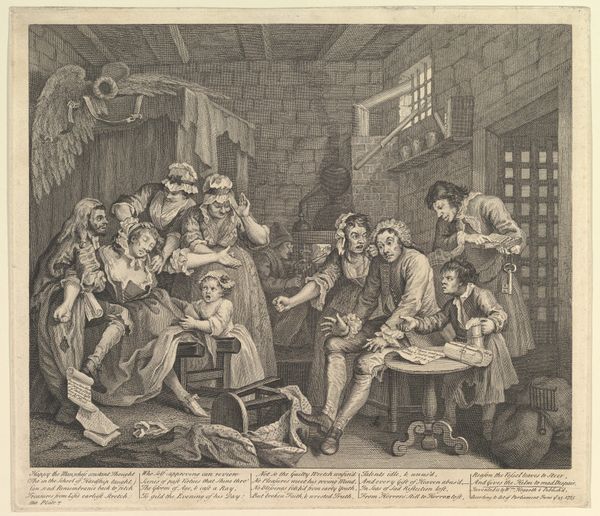
Dimensions: 51 x 61 cm
Copyright: Public domain
Curator: Upon first glance, I feel a certain... melancholy. A subdued theatricality despite the subject matter. Editor: That's a keen observation. Here we have Pietro Longhi's "The Lion's Cage," painted in 1762, currently held at the Querini Stampalia Foundation in Venice. It's an oil on canvas that captures a very specific kind of public spectacle from that era. Curator: The cage, you know, isn't what it seems. Look closely, it's a puppet show, a miniature stage complete with marionettes and that rather unsettling lion effigy. The whole composition, particularly the masked faces in the audience, evokes a sense of veiled secrets. Almost archetypal. Editor: Absolutely. Longhi was deeply interested in representing the social customs of Venice, and the act of masking – so prominent during the Carnival – becomes this incredible vehicle to look at how people perform their identities, even in their leisure. The elite families in the audience, for instance, seem as performative as the show itself. Curator: Notice the ape perched precariously atop the structure. A classic symbol! It acts as a knowing observer. To me it speaks to the primitive instincts bubbling beneath the surface of the refined Venetian society depicted here. It mirrors, doesn't it, the caged beast below? Editor: An excellent point. And consider the setting. The Lion's Cage was likely a temporary setup in a piazza, part of the wider landscape of spectacle and social gathering. It highlights how deeply interwoven entertainment and everyday life were at the time, particularly for those who had the means to partake. This painting isn't just documenting reality; it’s part of the social fabric it represents. Curator: There’s almost a commentary on perspective built into this painting. Look at the seated boy in the lower right – utterly disinterested in the spectacle, absorbed in his own world. And the placement of the violin player, a world away from all the "action". Everyone's emotional relationship is highlighted in their gaze and how the narrative affects them. Editor: And how those perspectives inevitably shift across generations. Today, it’s hard not to think about the politics of spectatorship, who gets to watch and who gets watched, especially when you view this work in the context of Venice’s complex political history. I suppose Longhi’s choice to freeze that specific moment is so fascinating because so much lies just beneath the surface. Curator: For me, revisiting this painting makes me remember the cultural memory, our ability to learn lessons through art and symbolic reminders, and continue discussions around these very important issues. Editor: It really reveals art’s enduring role to record social dynamics of past societies for present and future conversations. A true visual portal to our historical reflection, isn’t it?
Comments
No comments
Be the first to comment and join the conversation on the ultimate creative platform.
